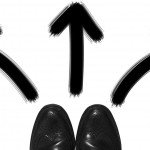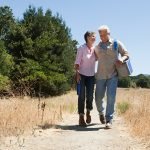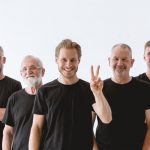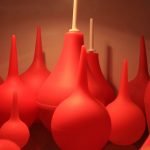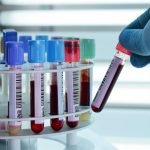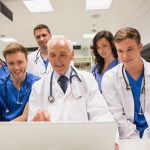A Scientific Education: Part 3
FRASER SMITH, MATD, ND
In my previous 2 articles, we examined how science and medicine have become intertwined as our contemporary forms of health care took shape. We also looked at how naturopathic medicine retooled its educational systems 50 years ago and emerged with a consistent system of physician-level training. There are challenges that the profession faces, as always, but we have done a good job of rising to meet them.
This month, we’ll attempt to see how advances in science might evolve into revolutionary tools and how that might impact medicine. As an important branch of the healing arts, naturopathic medicine will make use of these advances. The progression of health-related science and technology will impact all fields, and that includes us.
Will we be able to keep pace with the demands of a rigorous education? Will the very personalized model of health care we offer become more powerful and data driven? Or, is that a mirage that will yield to a decline in the need of experts like us? Do our fundamental principles and ontological grounding in the Vis Medicatrix Naturae have a place in the future of scientific medicine, or will it simply become relegated to the historical dustbin of intriguing ways to describe something that is now actually understood on a scientific basis? Or, will that very understanding turn the tables and leave reductionist, pathology-focused medicine behind, and a new era of systems-thinking provide a medical home for doctors like us?
Data, Doctors, and Decisions
We’ve already seen a change in how clinicians can make decisions based on evidence. The ability to access and retrieve precise information to support diagnosis and treatment decisions is completely different in this era of ubiquitous search engines and databases. These search engines can also sort information and differentiate results between case reports, animal studies, randomized controlled trials, and systematic reviews. As time goes on, this trove of knowledge will become deeper and the access will be faster. But at some point, the gargantuan collection of publications a doctor can access becomes too much to manage. Even in 2010, one commentator on this phenomenon calculated that 1 medical article was published every 26 seconds.1 So we will likely see the use of a very sophisticated AI assist function, which not only guesses what we want (which Google and other search engines attempt to do now), but in some sense also “thinks” along with us.
Clinical Decision Support
This leads to the concept of clinical decision support, which is already an embedded feature of many Electronic Health Records (EHR) systems.2 But the manner of that decision support will likely become more sophisticated. This is partly the drive to automate. This has a darker side, which is the removal of human interaction and human performance in daily life. But it also has an upside, which is that it can leverage physician time for patient support and give them more of a firm foundation on which to make decisions.
The other driving force here is that some of these support functions will be so vast in the aggregation of data and the computations of it, that it will be virtually beyond what anyone can do. DNA is a type of code,3 and gene expression and repression happens at multiple levels. Imagine the time when we can retrieve precise information about the impact of a drug, nutrient, herb, or an entourage of all these, based on a patient’s specific genome. This might be expressed as a probability of efficacy or potential harm. The sheer number of variables will require real-time assistance.
The human genome has already been sequenced, but it will take many decades for the implications of various genes and their associated disease risk factors and treatment options to become clear. We know a little bit about this now. We’ll know much, much more by 2050. It’s possible that this will be another area that allows for stochastic (random) events, and doctors will know levels of probability.
Systems Thinking
The naturopathic principle Tolle Totum speaks from a wisdom in natural medicine that human beings, like natural systems, function as an integrated whole. The science of understanding whole systems is advancing, and this can have an impact on our field.4 Whole systems are interconnected and sensitive to stimuli – one change here causes a reaction somewhere else. Some disruptions to a whole system are easily absorbed, and others can be highly disruptive. Again, we already know something about this, and sometimes even use small disruptions purposefully.5 Some phytochemicals, such as compounds in the Cruciferae family of vegetables, present a mild input to the cell “as if” there were real oxidative stress, and the result is an uptick in the production of Phase 2 enzymes. Medical doctors stopped using alpha-blockers to treat hypertension because they cause vigorous counter-reactions in the body. Tolle Totum is an attitude, a humility about the complexity of people and their physical frame.
Predictions and Fictions
Plenty of well-informed physicians, research scientists, and journalists have taken their best shot at envisioning medicine of the future. A very enjoyable attempt to do this was recently made in the University of California San Francisco’s alumni magazine.6 The authors put medical predictions for 2050 into a 4-quadrant diagram, with Game-Changing versus Overhyped on one axis, and Fiction versus Prediction on the other. In the Game-Changing and Prediction quadrant, we see things such as lab-grown organs, but also superbugs due to increased drug resistance. In the Overhyped and Fiction quadrant, we see both AI “doctors” delivering primary care and the medical resident work-week shortened to 40 hours.
There is a good dose of common sense in this alumni-created prediction model, in that events and practices that most of us never saw coming will arrive, while some developments we had feared will not materialize as anticipated. I personally doubt that the doctor on call will be a quantum version of the omniscient “Dr. Know” of the Spielberg film, A.I. Artificial Intelligence.
But things are progressing. I received an alumni email this week from the University of Toronto. A research group there has been studying how cardiac muscle regenerates, especially post-myocardial infarction. The cells must regenerate in a certain vector, with a specific alignment.7 They are working to create stem cells that will grow in a certain direction and, when hopefully introduced to a human heart, will lead the way for some section of a damaged heart to heal.
Naturopathic Medicine Sesquicentennial
With this kind of truly regenerative medicine here now, and with its certainty to develop rapidly, what does that mean for naturopathic medicine? As mentioned in last month’s article, it certainly vindicates many of the principles and beliefs of our medicine. But if the healing is delivered at this level of technology, do our methods with long histories, such as botanical medicine, really mean all that much? Perhaps that is our future too, that naturopathic doctors will be regenerative and gene-based practitioners with a proud but quaint history of those who used outdated methods but had the right idea about healing.
Can Low Tech Be High Science?
Or maybe it’s not so cut and dried. Allopathic medicine already specializes in helping to preserve life and limb when pathology has advanced beyond the self-repair phase (leaving aside the fact that this is concluded too hastily in many cases). Someone with catastrophic injuries from a motor vehicle accident might benefit enormously from the ICU and trauma surgery, but also from the reconstructive surgery and rehabilitation that is incredibly advanced in 2021.
Naturopathic medicine is really on the other side of the boat. We’re looking at how to help the body’s bioregulatory systems stay in balance. We look at physiological imbalances and how they are rooted in disturbances to the determinants of health. We also always attempt to hear and understand the personal narrative of our patients so that we can attempt to understand how best to help them.
There is nothing inherent in increased access to meaningfully organized data that precludes us from using it in our practice. More refined information about diagnosis and our naturopathic modalities is welcome, and in many ways it will serve us better than high-quality but rare and very reductionistic Cochrane-type systematic reviews that barely scratch the surface of our medicinal toolkit. Evidence that is more attuned to individual treatments seems like a good development.
And, in practical terms, with a predicted 9.7 billion people on earth by 2050, it’s not realistic to think in terms of on-demand drug delivery or designer organs for all. Our healthcare system is already stressed under the exigencies of a disease care model. More speed, more processing power, more energy, etc, might not be the sole solution to our problems.
Educating to the Future
What might this mean in the education of a naturopathic doctor who might reach mid-career in the 2040s? There is no doubt that helping students to understand how data might meet decision-making is going to be very relevant. The habits of thought that come with incorporating best evidence into diagnosis and treatment, as our students are now taught, certainly lend themselves to a willingness to use much more powerful analytic and predictive tools that are headed our way. But it seems that a more purposeful and focused study of enhanced clinical decision-making is going to be essential.
Our students already learn genomics and nutrigenomics, but this might have to elbow out the sheer volume of time spent on anatomy and some other subjects. A naturopathic doctor in any era needs to know the difference between the cauda equina and the sella tursica, but something might have to give, as the relationship between genes, response elements, chaperones, environmental signals, etc, and how these work as a whole, might simply be a language that the naturopathic doctor of the near future must be extremely literate in.
Maybe one career path for naturopathic physicians will be to perform those higher-technology-enabled regenerative procedures, like injecting germline therapies based on precise indications. It certainly has some relation to the healing power of nature.
The pedagogies in how the curriculum is delivered seem to be gradually becoming more self-directed. Pedagogies that use the learning science behind serious games – not limited to virtual reality, but definitely using game principles – are a topic of upcoming columns here.
It could be that powerful assistance for physicians from (possibly quantum) computing might shock even those of us who have seen computers progress from room-sized mainframes to pocket-sized dynamos. Aided by advanced genomics employed using a whole-systems framework, and enabled by such light-speed computing, a naturopathic doctor a few decades from now might be the primary care doctor that people need.
The naturopathic doctors we train now need to be like pilots of a Dreamliner. They won’t be manually or by memory operating all the subsystems of the machine, and some of it might even be over their heads. But they will be responsible to guide it, and to take charge when needed, even sometimes using old-school knowledge and methods. The genomic, data analytic, computational, and interventional technologies that are on the horizon are like that. They’ll take us to many places. And yet, an educated and creative problem-solver, with real compassion for the suffering, will be a doctor that many patients want as their own – just like the patients who seek out naturopathic physicians today.
References:
- Garba S, Ahmed A, Mai A, et al. Proliferations of scientific medical journals: a burden or a blessing. Oman Med J. 2010;25(4):311-314.
- Bajwa M. Emerging 21(st) Century Medical Technologies. Pak J Med Sci. 2014;30(3):649-655.
- Hood L, Galas D. The digital code of DNA. Nature. 2003;421(6921):444-448.
- Galli BJ. See the Bigger Picture: A True Systems Approach to Healthcare. Winter 2017. Long Island University. Digital Commons, LIU. Available at: https://digitalcommons.liu.edu/cgi/viewcontent.cgi?article=1002&context=post_cmmengfpub. Accessed March 21, 2021.
- Leak RK, Calabrese EJ, Kozumbo WJ, et al. Enhancing and Extending Biological Performance and Resilience. Dose-Response. 2018;16(3):1559325818784501.
- University of California San Francisco. What Will Health and Medicine Look Like in 2050? Winter 2020. UCSF Web site. https://www.ucsf.edu/magazine/health-2050-predictions. Accessed March 22, 2021.
- Crljen J. Using stem cells to prevent heart failure. November 9, 2020. Available at: https://mbd.utoronto.ca/news/using-stem-cells-to-prevent-heart-failure/. Accessed March 24, 2021.
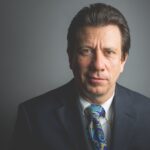
Fraser Smith, MATD, ND is Assistant Dean of Naturopathic Medicine and Professor at the National University of Health Sciences (NUHS) in Lombard, IL. Prior to working at NUHS, he served as Dean of Naturopathic Medicine at the Canadian College of Naturopathic Medicine (CCNM) in Toronto, Ontario. Dr. Smith is a licensed naturopathic physician and graduate of CCNM.




